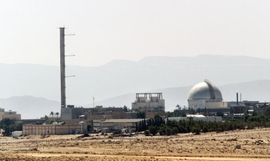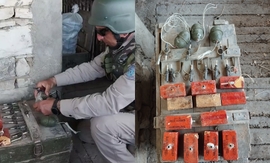Iran’s defense ministry has unveiled what it claims to be a sophisticated air defense system capable of hitting several targets, using the domestically-produced new generation of Sayyad-3 missiles.
Defense Minister Brigadier General Amir Hatami unveiled the homegrown air defense system named “Khordad 15th" in a ceremony in Tehran on June 9, Tasnim news agency reported.
“The new air defense system has been paired with the Sayyad-3 long-range missiles and is capable of detecting various targets, including warplanes and intruding drones, within a range of 150 kilometers and tracking them at a range of 120 kilometers” Hatami said.
The Khordad 15th system can supposedly detect stealth targets within a range of 85 kilometers (53 miles) and hit them in a range of 45 kilometers (28 miles). It is capable of intercepting six targets simultaneously, and its ease of mobility would allow servicemen to prepare the air defense system for engagement in less than five minutes. Khordad 15th is reported to be able to shoot down targets at a maximum height of 27 kilometers (17 miles) and within a range of 75 kilometers (47 miles).
The general also said that the system is equipped with a phased array radar and independent launch pads and can effectively take action against various aerial targets, such as reconnaissance aircraft, bombers and tactical warplanes. The system was developed by the ministry’s experts, and after was formally delivered to the Air Defense Force of the Iranian Army.
Iranian officials have repeatedly underlined that its military might poses no threat to regional countries, and the country’s defense doctrine is entirely based on deterrence.
On June 10, Iran's Foreign Ministry Spokesman Abbas Mousavi denied that the country has a plan to purchase the Russian S-400 air defense missile system.
“We have made no request to purchase S-400 air defense systems from Russia, and we do not have a need for it, either. Our own engineers have already built a similar system which is just as good as its Russian version,” Mousavi said during a press conference in Tehran, according to Mehr News Agency.
But Bloomberg reported on May 30 that Russia had rejected Iran’s request for the purchase of S-400 air defense system, fearing that this might escalate tension in the Middle East. The following day a source in military and diplomatic circles told TASS that Russia had received no requests from Iran for the delivery of S-400 surface-to-air missile systems.
Russia’s S-400 Triumf is the latest long- and medium-range surface-to-air missile system that went into service in 2007. It is designed to destroy aircraft, cruise and ballistic missiles, and can also be used against ground installations. The S-400 can engage targets at a distance of up to 400 kilometers (249 miles) and at an altitude of up to 30 kilometers (19 miles) under intensive enemy fire and jamming.
Iran has already purchased S-300 surface-to-air missile defense system from Russia. Tehran has announced that it is designing and manufacturing an indigenous version of the S-300 system, called Bavar-373, which would be more technologically advanced than S-300.







 The Mine Action Agency of Azerbaijan (ANAMA) reported on Thursday the discovery of a significant amount of explosives in the Khojavand district of ...
The Mine Action Agency of Azerbaijan (ANAMA) reported on Thursday the discovery of a significant amount of explosives in the Khojavand district of ...
 Russian peacekeeping forces, deployed in the Karabakh (Garabagh) region of Azerbaijan since 2020, have commenced their withdrawal from the area.
Russian peacekeeping forces, deployed in the Karabakh (Garabagh) region of Azerbaijan since 2020, have commenced their withdrawal from the area.
 Azerbaijan officially unveiled the logo for the upcoming 29th session of the Conference of the Parties to the United Nations Framework Convention o...
Azerbaijan officially unveiled the logo for the upcoming 29th session of the Conference of the Parties to the United Nations Framework Convention o...
 The Kazakh authorities have increased their arbitration claims against international oil companies involved in the development of the Kashagan oil ...
The Kazakh authorities have increased their arbitration claims against international oil companies involved in the development of the Kashagan oil ...
 Russian Foreign Minister Sergei Lavrov has reasserted that Moscow has no intentions to stop the fighting in Ukraine, even if peace talks commence.
Russian Foreign Minister Sergei Lavrov has reasserted that Moscow has no intentions to stop the fighting in Ukraine, even if peace talks commence.



